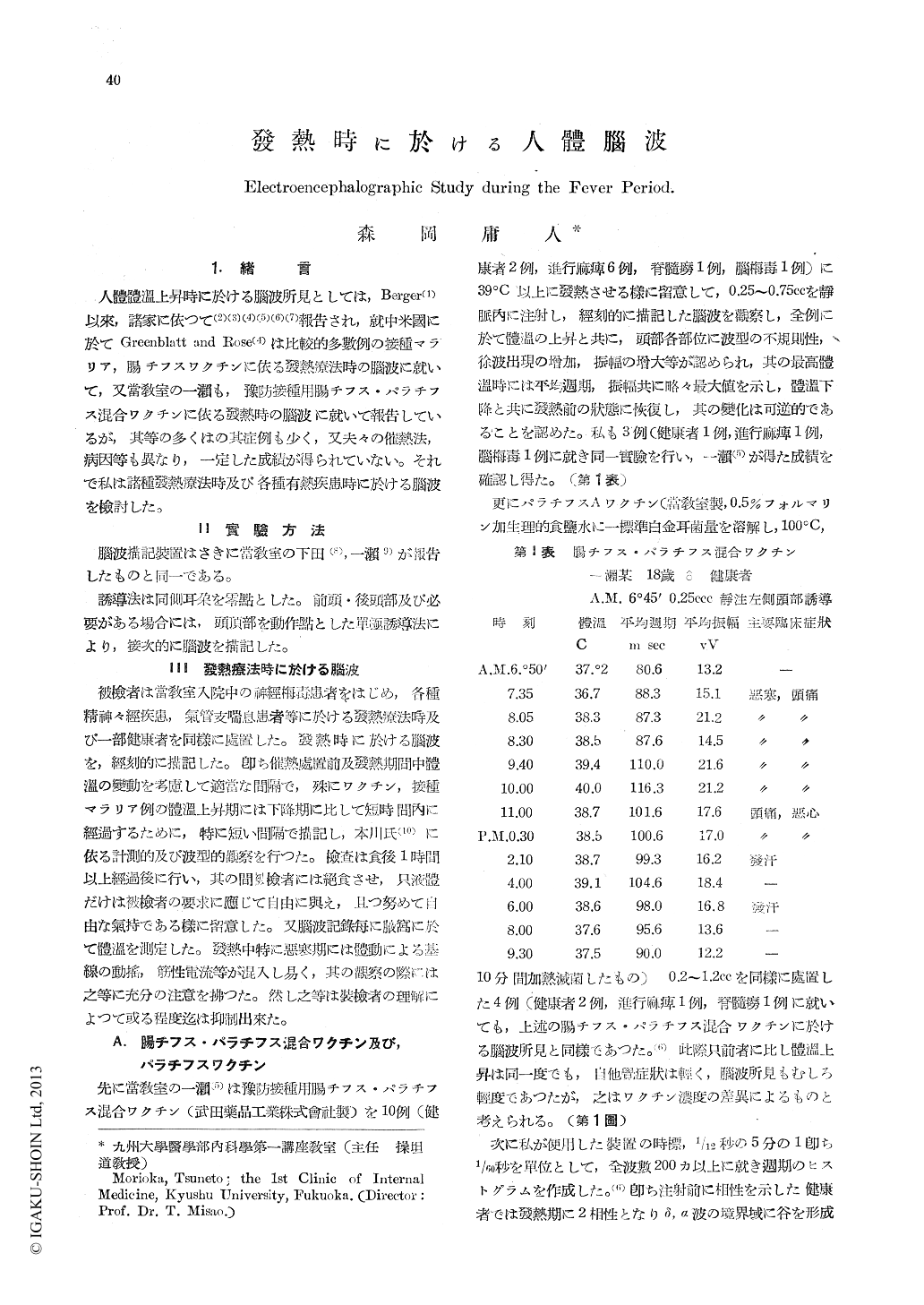Japanese
English
- 有料閲覧
- Abstract 文献概要
- 1ページ目 Look Inside
1.緒言
人體體温上昇時に於ける腦波所見としては,Berger(1)以來,諸家に依つて(2)(3)(4)(5)(6)(7)報告され,就中米國に於てGreenblatt and Rose(4)は比較的多數例の接種マラリア,腸チフスワクチンに依る發熱療法時の腦波に就いて,又當教室の一瀨も,豫防接種用腸チフス・パラチフス混合ワクチンに依る發熱時の腦波に就いて報告しているが,其等の多くはの其症例も少く,又夫々の催熱法,病因等も異なり,一定した成績が得られていない。それで私は諸種發熱療法時及び各種有熱疾患時に於ける腦波を檢討した。
Findings on brain waves at the ascendings period of human temperature have been reported by Berger and others. Howerver, it seems that the cases dealt with have not been sufficient enough innumber in most instances, and various fever treat-ment and diseases have been put under expermenta-tion, thus unabling to obtain definite results. The author investingated brain waves by means of various fever treatments and for various febrile diseases, and have reached the following results through a continued scruting of the cases.
1) Investigation at Fever Treatment Period:
In fever treatment by vaccine (typhoid-paraty-phold and paratyphoid A vaccine, innoculated. malaria tertiana and sulphur gingelly-oil, The au-thor observed in a large majority of cases the appearance of slow wave with high amplitude, irregularity of wave type, and bi-phasic changes of periodical histogram. These changes proved reversible as fever declined. On the contrary, in many cases of innoculated dengue fever, the fre-quency period to increase.
2) Investigation on various Febrile Diseases: In cases of bebrile diseases such as typhoid fever, leptospircsis icterohaemorrhagica, Bang's disease, and pleuritis with remittent fever, both average period and amplitude increased. Especially thechanges in the former three cases were remarkable and with the improvement of the symptoms, the author observed the tendency of brain waves torestore to the normal levels. Howerver, in cases of pulmonary tuberculosis and acute bronchitis, the average period and amplitude decreastd.
3) In cases where the appearance of remarkableslow waves at fever treatment and fever period: followed the author marked local difference in their changes. They were most remarkable in the frontal part, and then parietal part in order, and the slightest in the occipital, and the recovery took place in reverse order. Consequently there were some in which the so-called frontal superiority picture was visible. It is considered that this local_difference is correlated with the phylogenic factorsof the cerebrum.
4) The changes of brain waves at fever period occurred not only at the time of ascending tem-perature, but also in accordance with the indivi-dual difference, cause of disease and fever treat-ment. Furthermore, several factors such as cerebral blood circulation, basal metabolism, toxins and metabolically decomposed products, exsistence or non-exsistance and degree of primary diseases gave rise to changes, although no definite result could always be obtained. Thus, the so-callcd Arrhenius's law could not always be applicable.

Copyright © 1951, Igaku-Shoin Ltd. All rights reserved.


